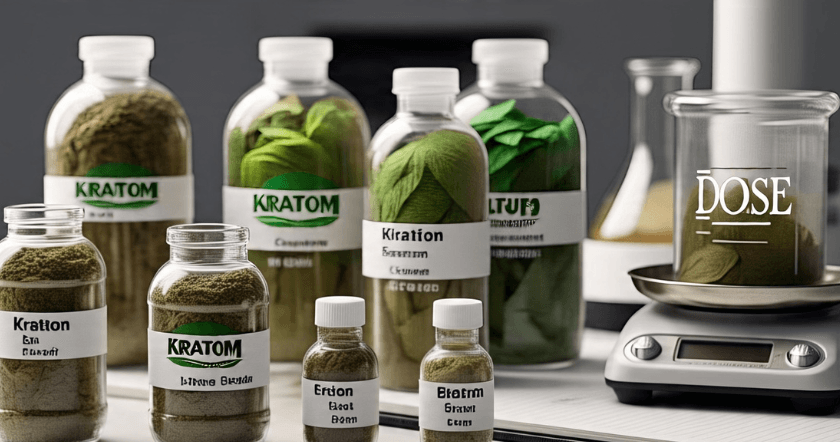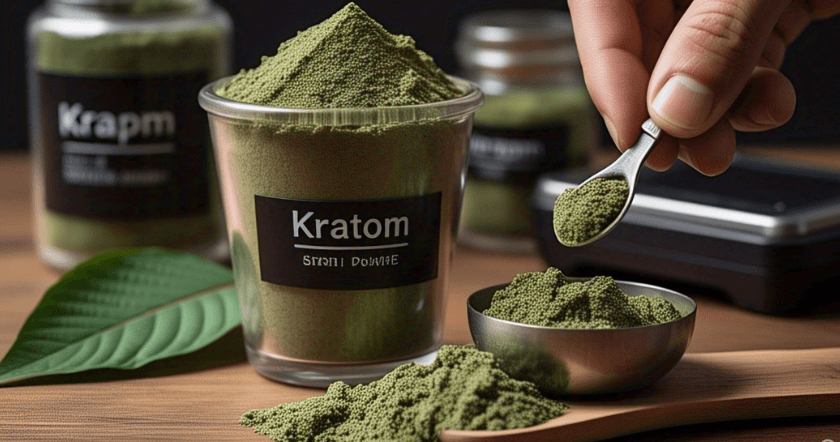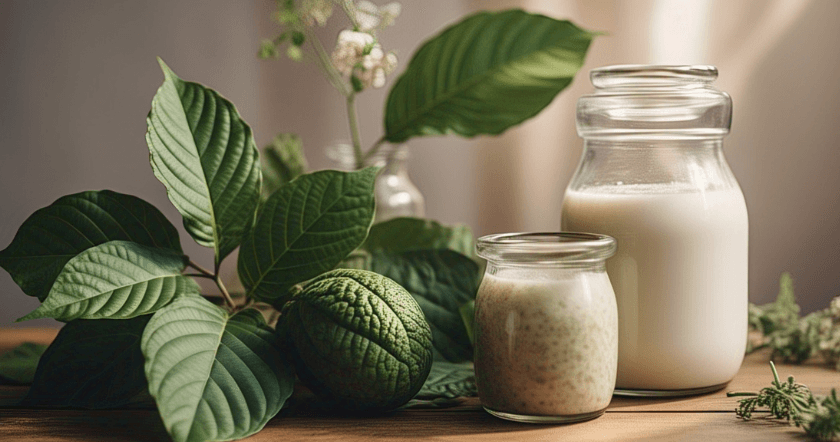From Niche To Mainstream: The Evolution Of Kratom Retail & E-Commerce
Kratom, once confined to the dense forests of Southeast Asia and used by local laborers for centuries, has steadily carved out a place in global wellness markets. As consumer demand for natural and plant-based supplements skyrockets, the journey from a niche ethnobotanical to a rising star of Kratom in modern retail and e-commerce ecosystems is nothing short of remarkable.
The Ethnobotanical Underground
Kratom (Mitragyna speciosa) was largely unknown in the West until the early 2000s. In its native countries, Thailand, Indonesia, Malaysia, it was traditionally used in teas or chewed fresh for its energizing and calming properties. Western explorers and researchers took note, and slowly, the herb began to enter alternative medicine circles and niche ethnobotanical stores.
Back then, Kratom was mainly sold in raw Kratom powder or capsule form via small online forums, herbal sites, or behind-the-counter sales in tobacco shops. E-commerce platforms were rudimentary. Websites lacked credibility, and the purchasing process required a high level of consumer trust. The primary user base was limited to biohackers, herbal enthusiasts, and underground wellness communities.
Legal Uncertainty And Regulatory Pressures
Kratom’s rise wasn’t without hurdles. Around 2016, the DEA proposed classifying Kratom as a Schedule I drug, equating it with heroin and LSD. The backlash from scientists, consumers, and advocacy groups like the American Kratom Association (AKA) was swift and loud, resulting in a temporary withdrawal of the proposal.
This regulatory turbulence forced Kratom sellers to become more sophisticated. Retailers started to prioritize transparency, lab testing, and compliance. Those who invested in third-party testing, GMP (Good Manufacturing Practices) certification, and consumer education were able to weather the storm and build long-term trust.
The Shift Toward Modern E-Commerce
As Kratom gained public attention, both positive and negative, forward-thinking brands seized the opportunity to evolve their business models. Kratom in E-commerce became the dominant sales channel, with the following trends taking center stage:
Website Quality And Branding
Gone are the days of basic HTML storefronts. Today’s leading Kratom retailers invest heavily in UX/UI design, mobile optimization, secure payment processing, and SEO. This transformation not only legitimized Kratom businesses but also helped convert curious visitors into loyal customers.
Content-Driven Education
With misinformation and stigma surrounding Kratom, content marketing became crucial. Blogs, whitepapers, dosage guides, and customer reviews were integrated into online stores to help demystify Kratom and support informed decisions. Brands that educated rather than pushed product saw better retention and conversions.
Third-Party Lab Testing And QR Codes
Transparency became a competitive advantage. The best Kratom stores now feature downloadable lab results, Certificate of Analysis (COA), and batch tracking via QR codes on packaging, a key trust factor for discerning buyers.
Subscription Models And Loyalty Programs
As Kratom usage became part of daily routines for many, stores began offering subscription plans and loyalty rewards. This model not only improved revenue predictability for businesses but also enhanced convenience and savings for customers.
Diversification Of Product Forms
Early products were mostly raw powder or Kratom capsules. Today, you’ll find everything from Kratom gummies, tablets, tinctures, Kratom Seletzer and softgels to flavored teas and even topical applications. Product diversification has helped Kratom reach new customer segments.
Retail Expansion: From Smoke Shops To Shelf Space
While online stores dominate Kratom distribution, brick-and-mortar availability has also evolved. Today, you’ll find Kratom in:
- Smoke And Vape Shops: Still the most common offline channel, especially for walk-in customers.
- Health And Wellness Stores: As stigma decreases, boutique wellness shops have started stocking high-quality Kratom.
- Specialty Ethnobotanical Shops: These curated stores offer a selection of natural remedies, including Kratom alongside kava, kanna, and CBD.
- Gas Stations And Convenience Stores: A growing but controversial trend; while accessible, these outlets often lack proper product vetting and quality control.
This retail evolution has been accompanied by increasing customer awareness. Many shoppers now use in-store QR codes to verify lab results on their phones or scan reviews before buying. Brick-and-mortar stores are responding with better staff training and exclusive in-store bundles to keep up with informed buyers.
The Role Of Social Media And Communities
Kratom’s journey into the mainstream has been largely community-driven. Platforms like Reddit, YouTube, Facebook groups (private due to restrictions), and Discord servers have been instrumental in spreading awareness, sharing experiences, and educating new users.
Influencers, herbal enthusiasts, and wellness coaches have also started talking about Kratom in broader wellness contexts, often in the same conversations as adaptogens, CBD, and functional mushrooms.
However, due to strict advertising restrictions on platforms like Google, Facebook, and Instagram, most Kratom brands rely on:
- Affiliate Marketing
- Email Newsletters
- Organic Search Engine Optimization
- Customer Referral Programs
Payment Processing And Legal Challenges
Despite progress, Kratom retailers continue to face payment processing hurdles. Major gateways like Stripe and PayPal often prohibit Kratom sales, classifying them as “high-risk.” As a result, many sellers must rely on specialized high-risk processors with higher fees and stricter terms.
Moreover, legal battles at the state level where some U.S. states ban or restrict Kratom continue to pose regional challenges. However, the Kratom Consumer Protection Act (KCPA), spearheaded by the American Kratom Association, has helped standardize rules in pro-Kratom states by requiring labeling, testing, and age restrictions.
Who Buys Kratom Today?
Originally seen as a niche product for alternative health seekers, Kratom now appeals to a broader demographic:
- Working Professionals: Seeking a natural focus enhancer or daily routine booster.
- Fitness Enthusiasts: Using Kratom pre- or post-workout for performance and recovery.
- Former Coffee Drinkers: Looking for a more balanced energy source.
- Wellness-Focused Individuals: Curious about plant-based and natural supplementation.
This broadening appeal has pushed Kratom toward mainstream wellness categories, often appearing alongside nootropics, CBD, and adaptogens.
Where Is Kratom Retail Headed?
As Kratom continues to evolve, the next wave of innovation is likely to include:
Regulatory Recognition
Standardized labeling, manufacturing standards, and national KCPA adoption could further legitimize the market.
Mainstream Retail Partnerships
Large e-commerce platforms like Amazon and mainstream retail stores may eventually carry Kratom if legal clarity improves.
Functional Kratom Products
Kratom-infused products such as energy shots, protein bars, or combination supplements with synergistic herbs could open new doors.
Global Expansion
While the U.S. leads in retail Kratom adoption, emerging markets in Europe and Latin America are beginning to show interest, especially as natural wellness trends spread globally.
Click To Join Our Wholesale Program
Bedrock Botanicals: Elevating Kratom Retail
As one of the standout names in the modern Kratom industry, Bedrock Botanicals represents the best of this retail evolution. Based in the U.S., Bedrock Botanicals offers a wide range of premium Kratom strains including reds, greens, and whites, available in capsules, powder, and other innovative formats.
What sets them apart is their rigorous quality assurance, including third-party lab testing, batch traceability, and ethical sourcing practices. Their website is user-friendly, offers educational resources, and integrates subscription options for recurring buyers.
Additionally, Bedrock Botanicals has cultivated a loyal customer base by staying transparent, listening to its community, and delivering consistently excellent products. For anyone looking to buy Kratom from a reliable and modern retailer, Bedrock Botanicals is a name that continues to set the standard.
FAQs
Can I Buy Kratom On Amazon Or eBay?
No. Due to policy restrictions, major e-commerce platforms like Amazon, eBay, and Walmart do not allow Kratom sales. Reputable Kratom is best purchased directly from dedicated websites like Bedrock Botanicals.
Why Is Lab Testing Important When Buying Kratom?
Lab testing ensures the Kratom is free from contaminants like heavy metals, bacteria, or adulterants. It also verifies alkaloid content and potency, ensuring both safety and effectiveness.
What Makes a Kratom Retailer Trustworthy?
Look for retailers that offer third-party testing, batch tracking, GMP compliance, and transparent sourcing. Positive reviews and responsive customer service are also key indicators.
Are Subscription Services Available For Kratom?
Yes, many modern Kratom stores offer subscription models. These allow you to receive your favorite products at regular intervals with discounts, ensuring convenience and consistent supply.










